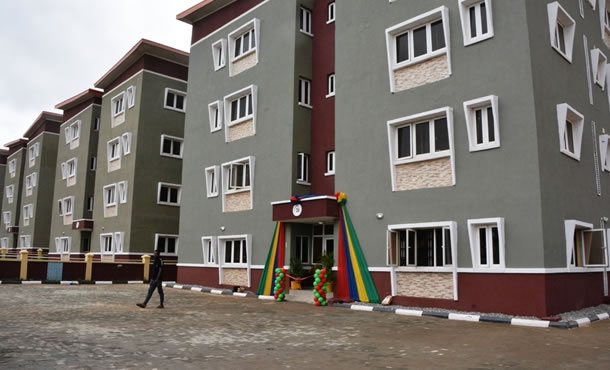Build to suit building and construction transforms empty land into a custom-made center, crafted precisely to what a business needs. Imagine someone structure your dream home, with every space ideal for you - that's built to fit companies.

Landlords and occupants shake hands on deals that let companies have buildings created specifically for them. It resembles making a tailored fit; the residential or commercial property fits the occupant completely.
From choosing the ideal spot of land to turning over the secrets, develop to fit covers it all. But it's not a fast process; it can take rather a long time before whatever is up and running.
That's because there are many steps along the method: discovering land, drawing blueprints, constructing from scratch, and including those last touches.
Why do individuals go for this option? For beginners, when occupants move in, they find their area already set up simply how they wanted it - no renovations required. This setup assists landlords too since happy occupants mean steady lease for years.
However, like any huge commitment, you've got to look at both sides-the perks in addition to where things may get tricky-it's only fair.
Choosing whether or not build-to-suit is clever takes comprehending how these jobs work out financially and contractually-after all, we're speaking about custom-building whole residential or commercial properties here! And if you wonder about who foots the costs or if nationwide brand names prefer this route over others.
think what? You've encountered just the guide!
Unpacking each layer of build-to-suit construction will leave us better notified about its impact on genuine estate today and tomorrow. So keep reading-there's far more than meets the eye!
- Build to suit building and construction permits organizations to have actually structures developed and developed particularly for their needs, typically resulting in more efficient and practical spaces.
- There are financial ramifications in build-to-suit jobs such as higher expenses due to customization. Still, these can be balanced out by the long-term benefits of having an area completely suited for a business's operations.
- Both tenants and proprietors can gain from build-to-suit leases; tenants get tailored facilities while property managers take pleasure in steady, long-term lease contracts that might increase residential or commercial property worth.
- Potential downsides consist of time-consuming development procedures, difficulty adapting the space if service needs change, unexpected expenses, and disputes over style specs.
- Ground leases offer an opportunity for services to establish residential or commercial property without buying land outright, supplying versatility while enabling landowners to keep ownership and collect rent.
Understanding Build to Suit Development
Build to fit advancement involves developing and building a building according to a particular renter's requirements. It uses benefits such as customized design, turnkey jobs, and tenant input, but there are also expenses and potential issues to consider.
A construct to suit is a tailored advancement where every detail accommodates the renter's specific operational requirements. This tailored construction guarantees that clients get an area perfectly developed for their company activities, with no compromise on layout or centers.
Developers collaborate closely with renters throughout the style process, making sure that the final structure reflects exact requirements and functions efficiently for the intended use.
In these arrangements, property owners or developers commit to creating a residential or commercial property based upon occupant input from start to end up. They deal with website choice, obtain necessary permits, construct the structure, and deliver ready-to-use premises under a lease contract.
The key is crafting an environment genuinely suitable for purpose-be it workplace area, retail location, or commercial facility-giving tenants the benefit of moving into a residential or commercial property built simply for them.
Advantages of build to match
Build to match advancement uses numerous benefits for both renters and developers. Firstly, the client-specific design element guarantees that the residential or commercial property satisfies all functional needs and specific requirements of the renter, causing a highly customized and efficient space.
Secondly, develop to suit projects are often turnkey, offering a problem-free procedure for tenants who can move into a ready-to-use area without needing to handle construction or design aspects.
Additionally, the lease arrangement in build-to-suit plans normally provides long-lasting stability and predictability for both parties.
The ability to select a perfect website is another advantage of build-to-suit advancement, permitting occupants and developers to protect prime places that are specifically matched to their needs.
Design process
The style procedure for build to match development includes developing a client-specific design, making sure that the residential or commercial property satisfies the occupant's specific functional requirements. This incorporates everything from choosing a suitable website to finishing turnkey tasks tailored to the tenant's requirements.
The timeline for such tasks can be quite extensive, involving land acquisition, negotiation, and the completion of complicated building and construction phases. Success is attained when the residential or commercial property satisfies all preferred specs and requirements of the tenant.
As with any element of build-to-suit advancement, cautious consideration of both pros and cons is necessary before starting this journey.
Ultimately, discovering a company that specializes in filling structures with tenants needs an understanding of each action associated with develop to suit advancement consisting of costs and lease structures.
Costs and lease structure
After completing the design procedure, it's essential to comprehend the expenses and lease structure associated with a build-to-suit development. The monetary aspects of a build-to-suit job are important for both proprietors and renters.
The costs included can include land acquisition, construction expenditures, and different costs related to developing a residential or commercial property to fulfill particular customer needs. A build-to-suit lease structure usually involves a long-lasting contract in between the landlord or developer and the tenant to make sure that all financial terms are mutually beneficial.
Such contracts require careful factor to consider of factors such as rental rates, renter improvement allowances, running & marketing costs, and other monetary commitments detailed in the renting documents.
Build to suit construction includes possible downsides that need cautious consideration. The process can be lengthy, as it involves finding and acquiring land, creating, constructing, and completing the task according to the tenant's specifications.
Additionally, there may be restrictions in regards to versatility once the residential or commercial property is built. The costs associated with a build-to-suit lease can be greater compared to leasing an existing space due to the customization included.
Moreover, if the renter's requirements alter with time, making changes or broadening the area may posture difficulties.
Is a Build-to-Suit Lease Right for You?
Considering a build-to-suit lease in real estate? Discover more about what it means, how it works, and who spends for it. Discover the benefits for both renters and landlords, along with prospective complications to be knowledgeable about.
What it implies in realty
In property, a build-to-suit lease is a specific arrangement in which the property manager or designer constructs a building to meet the specific operational requirements of a renter and then rents it to them.
This type of lease permits client-specific design and personalization, enabling renters to have a space tailored precisely to their requirements. Build-to-suit jobs involve careful website selection and are ideal for long-term customers who seek special residential or commercial property services that align with their organization goals.
Build-to-suit development has to do with creating turnkey residential or commercial properties that cater directly to the requirements of occupants, offering custom-designed areas that support their operations thoroughly.
After understanding what a build-to-suit lease means in property, it is essential to comprehend how it works in practice. The process includes the proprietor or designer building a building to fulfill the occupant's particular requirements and after that renting it to them.
This arrangement enables the tenant to have a space tailored exactly to their requirements, guaranteeing that they can run effectively while satisfying their organization objectives. Once the building is complete, the renter leases the residential or commercial property from the property manager under agreed-upon terms and conditions.
The entire procedure consists of different steps, from site choice and design through to completion - all focused on developing client-specific created spaces. It's crucial for both landlords and tenants to be actively involved throughout this treatment, ensuring that all elements of the build-to-suit lease are satisfied effectively.
Who pays for it?
After comprehending how the build-to-suit lease process works, it is essential to delve into who bears the expenses. In a build-to-suit arrangement, the landlord or developer typically covers the expenditures for constructing a structure that meets the renter's particular requirements.
This includes everything from design and building and construction to acquiring permits and overseeing the task to ensure it aligns with the occupant's needs. The expenditures related to such customization are normally factored into the lease terms, including lease amounts and any additional costs connected to maintaining and managing the residential or commercial property.
Potential complexities might occur when determining who pays for particular elements of the advancement process, making it essential for both parties to clearly lay out expense responsibilities within their lease agreement.
Advantages for occupants and property managers
Build-to-suit leases provide clear advantages for both tenants and landlords. For the lessee, a build-to-suit contract ensures an area that is customized to their particular needs, supplying a client-specific style that satisfies their exact requirements.
This tailored area can enhance efficiency and effectiveness for the renter, eventually resulting in increased satisfaction and potentially reduced operational expenses. On the proprietor's side, taking part in build-to-suit leases can attract long-lasting tenants, lower vacancies, and increase residential or commercial property value due to the specialized nature of the built area.
The procedure of producing custom-designed structures through build-to-suit plans cultivates mutually helpful relationships in between tenants seeking special areas and property owners looking to take full advantage of residential or commercial property worth through long-lasting lease agreements.
Disadvantages and possible complications
The build-to-suit lease plan can cause possible disadvantages and complications for both the landlord or developer and the tenant. Unexpected expenses might develop throughout the building phase, affecting the spending plan and timeline of the project.
Additionally, disagreements over style specs and modifications in business requirements could potentially strain relationships in between the 2 parties. Furthermore, if a renter chooses to vacate the personalized space before their lease term ends, it might present difficulties for property managers in discovering a new lessee with coordinating requirements.
It's essential to carefully think about these possible drawbacks before participating in a build-to-suit lease arrangement. Both tenants and property managers should thoroughly assess their long-term goals and financial abilities to reduce any possible problems that might arise throughout this kind of advancement procedure.
Finding Build-to-Suit Construction Financing
When it comes to discovering financing for build-to-suit building and construction, it is very important to comprehend the differences in between build-to-suit and build-out. This alternative is particularly attractive for long-lasting renters and can be instrumental in attracting nationwide tenants through ground leases.
Great for long-term renters
Build-to-suit construction is perfect for long-lasting occupants needing a space customized to their particular requirements. This form of development permits occupants to have a say in the design and layout, guaranteeing it perfectly fulfills their functional needs.
With a build-to-suit lease, clientspecific design aspects are included into the building, providing a custom-made solution that promotes long-term renter satisfaction and retention.
For those trying to find sustainable options gradually, this method uses stability and convenience through tailored areas designed to accommodate developing organization needs. The concentrate on client-specific style makes sure that organizations can operate efficiently within the space as their operations grow and progress seamlessly.
Differences in between build-to-suit and build-out
Build-to-suit building and construction involves building a building to satisfy a renter's requirements and then leasing it to them, while build-out describes customizing an existing area according to the occupant's needs.
The crucial distinction depends on the development stage - build-to-suit goes back to square one, whereas build-out customizes a currently existing structure. Build-to-suit deals tenants a totally tailored space that fulfills their specific requirements however tends to have a longer timeline and possibly greater expenses, while build-out enables adjustment of an available residential or commercial property with relatively faster turnaround time and typically lower preliminary investments.
In conclusion, comprehending the variations in between build-to-suit and build-out is essential for both property owners and renters when considering their specific leasing or advancement requirements.
Attracting nationwide occupants
To bring in nationwide renters for a build-to-suit advancement, it is vital to highlight the tactical location and ease of access of the residential or commercial property. Emphasizing proximity to major transport paths, such as highways or airports, can be a significant draw for national tenants looking for efficient logistics.
Additionally, showcasing neighboring amenities and centers like company centers, retail outlets, or houses interest prospective renters seeking to establish a strong existence in lively communities.
Highlighting the capacity for customization and scalability within the build-to-suit job can likewise draw in nationwide renters looking for space tailored particularly to their operational requirements.
Furthermore, promoting the long-lasting advantages of a ground lease arrangement can be a reliable technique in bring in national tenants. Ground leases use flexibility and stability by enabling services to utilize important land without buying it outright.
Ground rents
Transitioning from the factors to consider of attracting national renters to another aspect of build-to-suit building and construction, ground leases are an important element to comprehend. In a ground lease arrangement, the tenant generally has control over developing and keeping the residential or commercial property while paying rent for the land independently.
This type of lease usually lasts for a prolonged period, typically exceeding 50 years, enabling long-term development and investment in the residential or commercial property. Ground leases can be useful for proprietors as they maintain ownership of the land while benefiting from steady rental income.
However, occupants likewise have more liberty in building and tailoring their buildings according to their particular requirements.
In conclusion, build-to-suit development uses a tailored method to fulfilling the specific requirements of tenants. Understanding the advantages and downsides is crucial for both property owners and tenants.
With careful factor to consider, an effective build to match project can meet all desired specifications while offering a tailored space for long-lasting occupancy. Explore related topics such as lease accounting and payment responsibilities to gain additional insights into this complex yet rewarding real estate technique.









